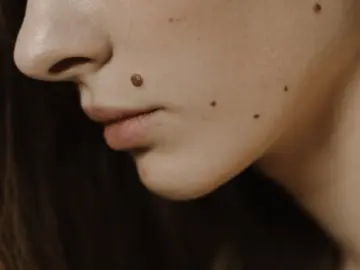Those with moles either love or hate them. Some see them as ‘beauty spots’, marks of individuality that should be celebrated, whereas other see them as blemishes and find them a constant source of irritation.
If your moles are more Rod Stewart than Cindy Crawford, and you, like Enrique Iglesias, Sarah Jessica Parker and countless other celebrities are thinking of having them removed, finding out how to do so safely and effectively is vital.
What Are Moles?
Most moles (or melanocytic naevi as they’re scientifically known) are harmless brown or flesh-coloured growths that can occur all over the body. They can be flat or raised, smooth or textured, and range in size from that of a pin prick to up to 3 inches across. They tend to be circular or oval with a smooth edge, and are usually permanent.
There are many different types of moles, with some being rarer than others.
What Causes Moles?
Moles are sometimes present at birth, but the majority of moles develop during a person’s first 30 years of life. They are made up of cells called melanocytes which produce pigment in the skin.
Moles are more likely to develop on an individual if they are common to that person’s family. They appear most often on people with fair skin, and exposure to the sun will also increase the likelihood of developing them.
How to Prevent Moles
Whilst moles that have appeared as a result of a genetic predisposition cannot be prevented, those caused by sun damage can.
Adequate protection from the sun is the single most important thing you can do to avoid developing moles. Stay out of the sun during the brightest part of the day, always use a high SPF and reapply it often in particularly sunny situations.
How to Get Rid of Moles
While most moles are completely harmless, they can be unsightly and affect a person’s confidence. Some moles may become a nuisance if they regularly catch on clothing or if they often get cut while shaving.
Different types of moles are best removed in different ways. Large, raised moles that have become a nuisance can be removed with surgery, but this post will focus on non-surgical options.
Smaller moles can be removed with laser treatment. This procedure involves the use of a handheld device to target a mole with laser light energy. This energy is absorbed by the pigment in the mole, which causes it to break up and be reabsorbed by the body.
Most moles will require multiple treatments to disappear completely. For more information on laser therapy, please download our fact sheet which is available on our information page.
Save Face
Whilst the majority of moles are completely harmless, if your moles have recently changed or you have any concerns at all about their appearance, it’s important to see your GP to rule out melanoma.
Laser mole removal is generally a safe and effective procedure when carried out by a fully qualified professional. However, as it is a non-surgical cosmetic treatment, it is currently unregulated in the UK.
In order to ensure that you select a safe practitioner who works with safe products in a safe environment, use the Save Face multifaceted search engine. It is the only way to ensure that your treatment is carried out by a trained, certified medical professional, so that you can rest assured that you receive the best care possible.
Use Save Face today to stay safe, not sorry.


